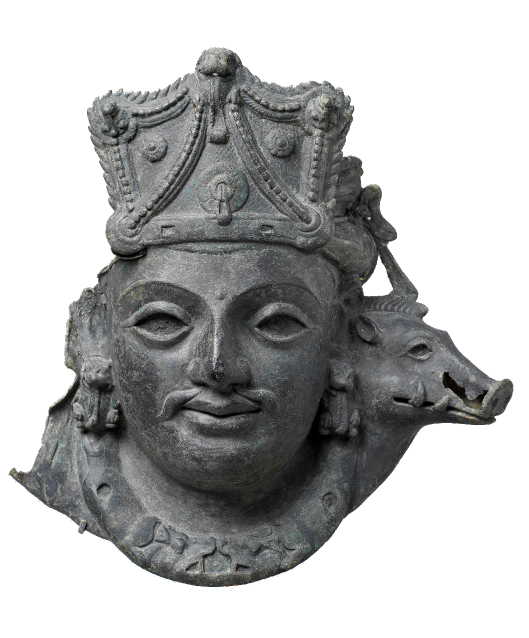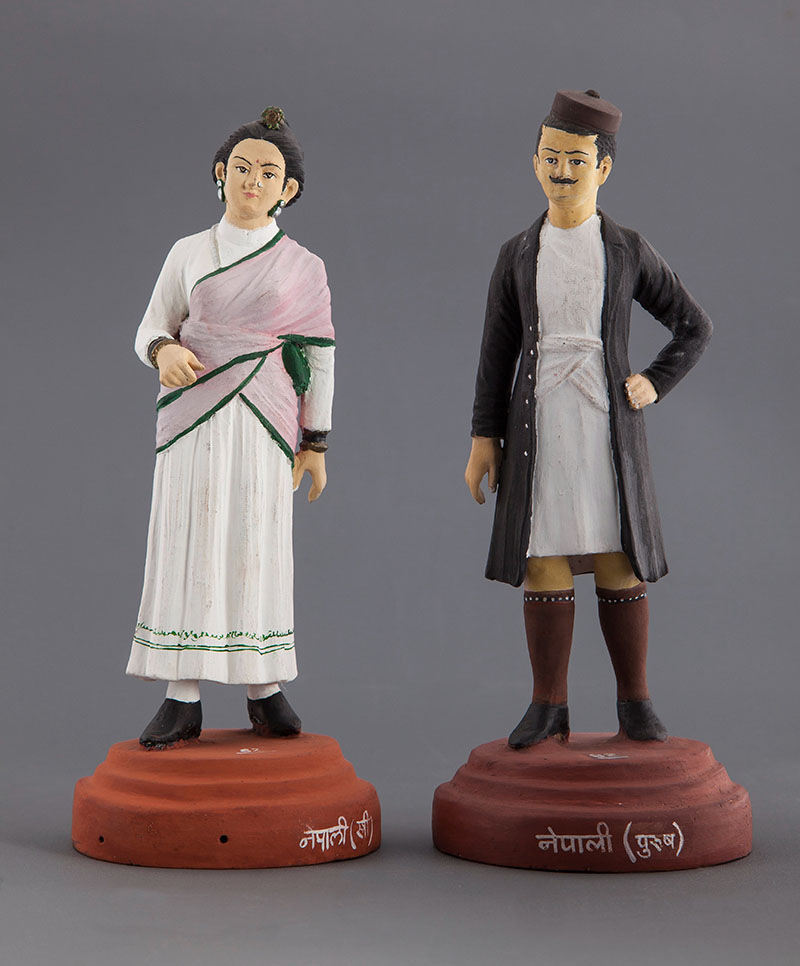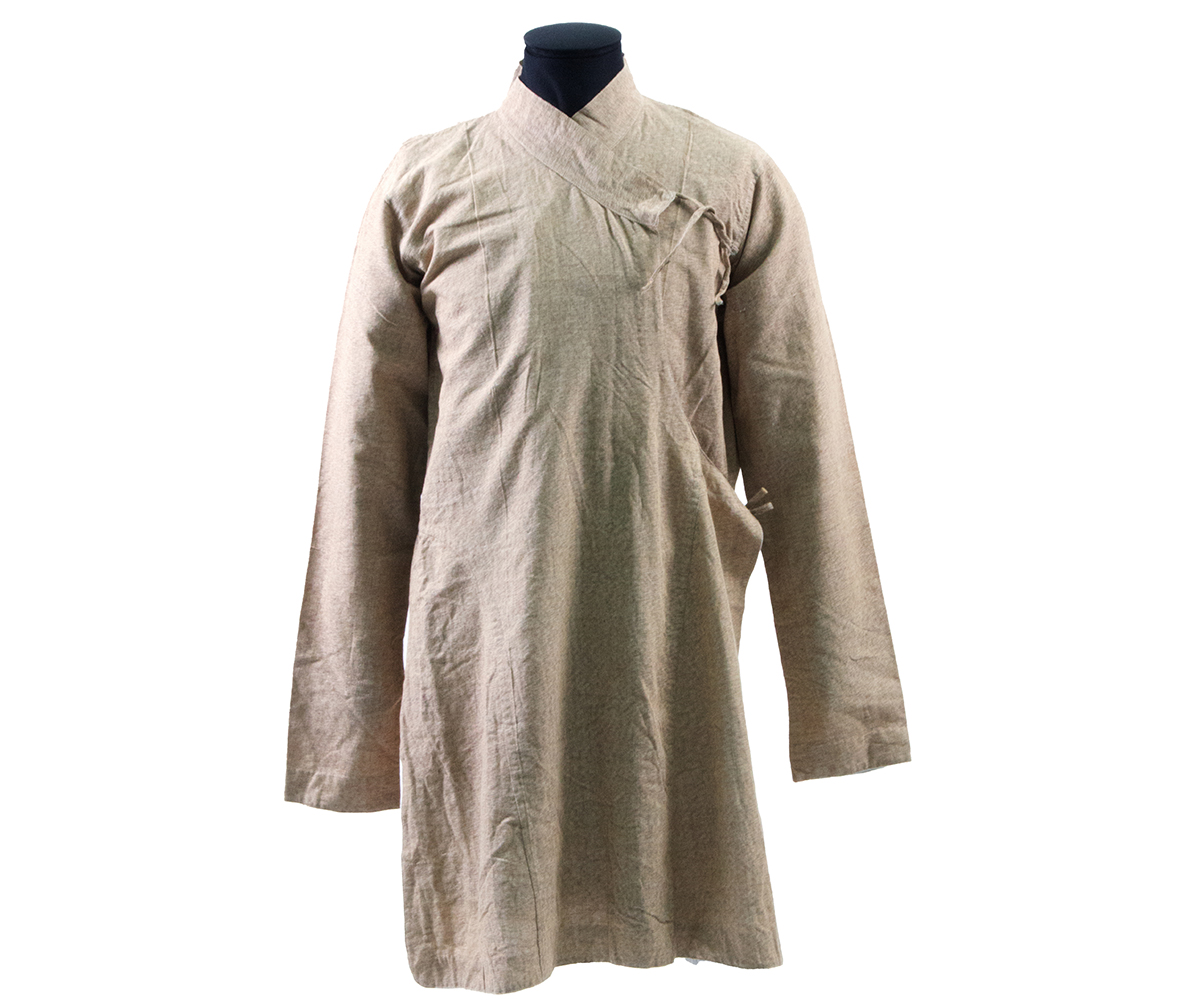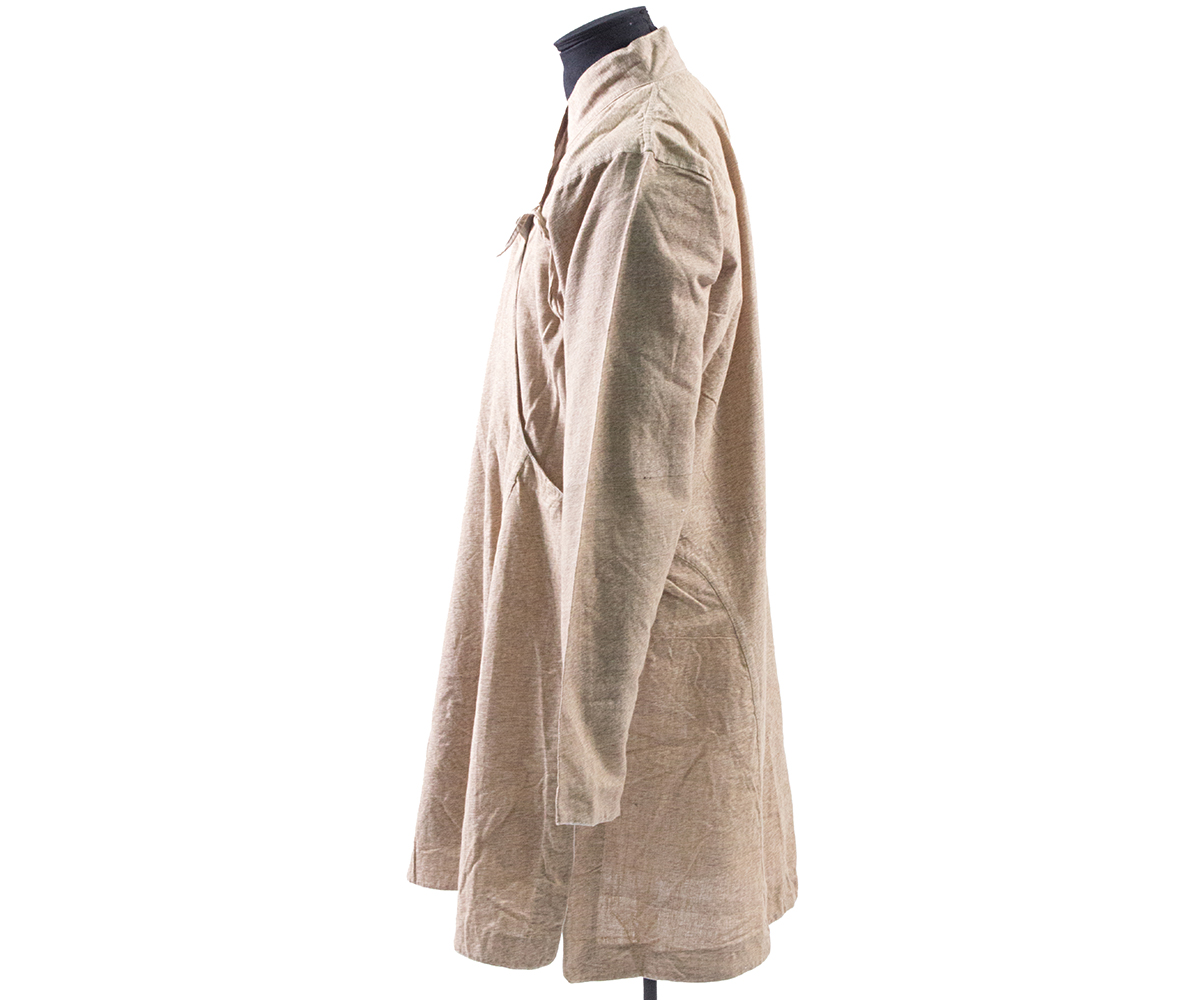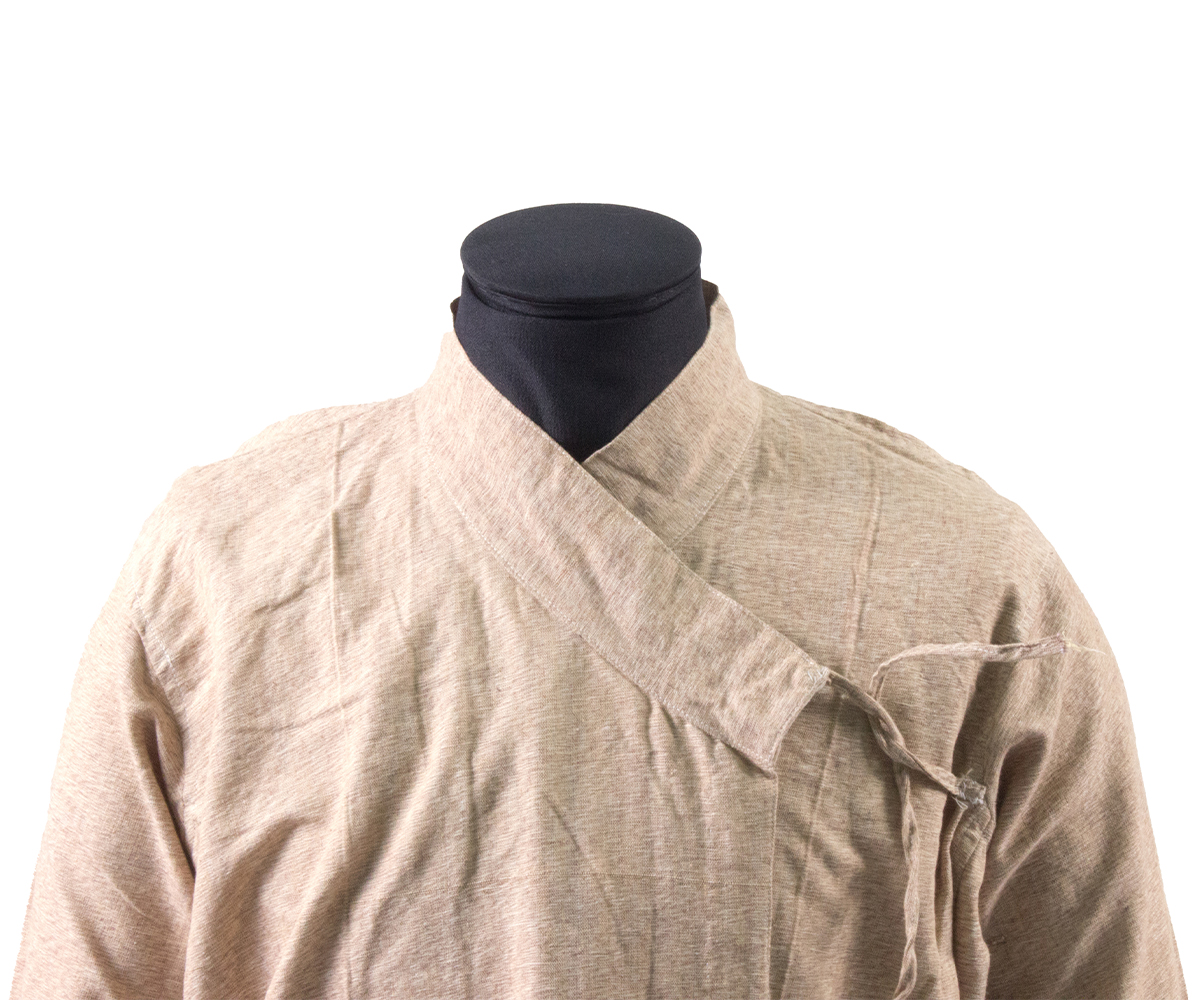ARTICLE
Chaubandi and Daura
The daura, also known as the labeda, while similar to the chaubandi in design, is significantly longer, reaching the mid-thigh, and always has full sleeves. Like the chaubandi, it wraps across the torso for a closed neck. Its eight tie-cords lead to it being considered lucky in some contexts, as the number is auspicious in local cultures. Dauras are usually made in solid, muted colours, with little regional variation, though the hem often features a patterned border. The daura is typically worn with a suruwal — drawstring trousers similar to the pyjama — and a Dhaka topi, with a patuka wrapped around the waist. A waistcoat and/or blazer are frequently worn over it.
The daura worn by men of the Tamang community is often brightly coloured with a golden hem, and its left half is worn over the right. Tamang men also wear the circular, colourful woolen cap known as the Shyade with the daura, instead of the Dhaka topi. Similarly, men of the Limbu and Newar communities often replace the Dhaka topi with the wrapped Paga cap and the Bhadgaule topi respectively.
Since the late nineteenth century, the chaubandi and daura have effectively formed part of Nepal’s national dress, and officially so from 1961 to 2011. In 1961, the monarchy imposed a political system known as Panchayati Raj under the slogan Ek Raja, Ek Bhesh, Ek Bhasha (‘One King, One Dress, One Language’) — which sought to establish a uniform Nepali culture based on the norms and practices of upper-caste Hindus. The policies included nationalising the Nepali language (which derives mainly from the Khas language), and making the daura-suruwal and gunyo-cholo the mandatory dress code for state ceremonies and state officials. Although Nepal became a constitutional monarchy in 1990 following the People’s Movement, this dress code remained in place until 2011, when it was abolished by an elected government in a move to reduce the influence of upper caste practices on Nepali culture. While no longer required by law, government employees continue to wear the chaubandi and daura because of the garments’ association with nationalism and tradition.
The association of the chaubandi and daura with identity and tradition, even among non-Khas communities, is more pronounced among some Nepali migrants living in parts of India — Darjeeling, West Bengal, and Sikkim — than among Nepali citizens themselves, giving Nepali tailors a larger market to cater to in recent years. The public representation of Nepali cultural identity through dress and language is an important part of the Gorkhaland movement, which seeks to establish a separate Indian state for Gorkhas or Nepali-speaking Indians in what is currently West Bengal.
Bibliography
Besky, Sarah. The Darjeeling Distinction: Labor and Justice on Fair-Trade Tea Plantations in India. London: University of California Press, 2014.
Dunsmore, Susi. Nepalese Textiles. London: British Museum Press, 1993.
“Faces Blackened after Dress Code Defiance.” The Telegraph, October 15, 2008. Accessed May 7, 2024. https://web.archive.org/web/20110912061333/http://www.telegraphindia.com/1081015/jsp/siliguri/story_9968368.jsp#.
Ghimire, Him Lal. “A Study of Living Godess Kumari: The Source of Cultural Tourism in Nepal.” The Gaze 9, no. 1 (April 2018): 23–42. https://doi.org/10.3126/gaze.v9i0.19718.
Guragai, Diwas. “Darjis for Darj.” Nepali Times, October 5, 2008. Accessed May 7, 2024. https://archive.nepalitimes.com/news.php?id=15276.
Lawoti, Mahendra. “Competing Nationhood and Constitutional Instability: Representation, Regime, and Resistance in Nepal.” In Unstable Constitutionalism: Law and Politics in South Asia, eds. Mark Tushnet and Madhav Khosla (New York: Cambridge University Press, 2015), 86–123.
Majupuria, Indra. Nepalese Women. Bangkok: Tecpress Books, 1996.
Pradhan, Surendra Mani. “Dynamics of Ehi Ceremony among the Newars of District Darjeeling.” MA diss., Sikkim University, 2018. https://dspace.cus.ac.in/jspui/bitstream/1/6149/1/surendra%20mani%20pradhan.pdf.
Subba, J. R. History, Culture and Customs of Sikkim. New Delhi: Gyan Publishing, 2008.
“The Finest 100 of Nepal.” ECS Nepal 97, December 2009. https://ecs.com.np/features/the-finest-100-of-nepal.
Vir, Dharam. Education and Polity in Nepal: An Asian Experiment. New Delhi: Northern Book Centre, 1988.
